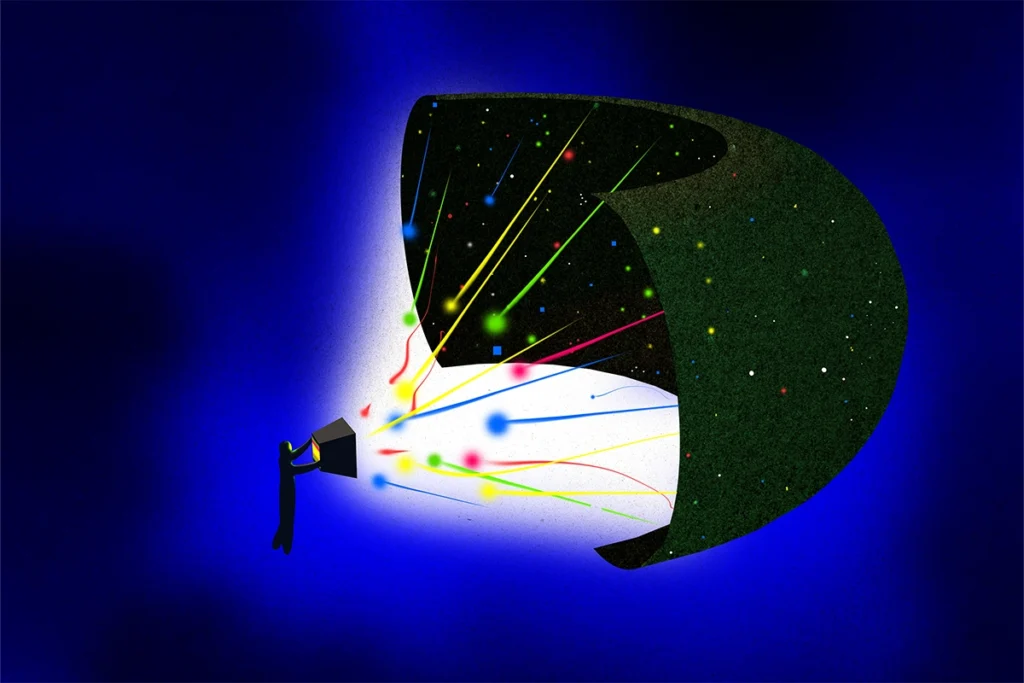Neuroscience research and training has taken a $323 million hit in the form of grants rescinded by the U.S. National Institutes of Health (NIH), according to an analysis by The Transmitter. Of the 2,360 grants the Trump administration has canceled so far this year as of 30 May, about 15 percent are neuroscience related.
That is a “significant chunk” of the NIH neuroscience budget, says Joshua Gordon, professor of psychiatry at Columbia University, who directed the National Institute of Mental Health (NIMH) from 2016 until 2024. Researchers across the field are “feeling abandoned and attacked and wondering about the future of neuroscience,” he says.
The purge includes $218 million dedicated to basic and clinical neuroscience research and $105 million to fund training programs, brain atlases, and centers and cores that provide resources for neuroscientists across 98 institutes, hospitals and companies. Harvard University and Columbia University received the brunt of the cuts, losing more than $230 million combined.
In a hearing for two lawsuits today, a federal judge ruled that some of the grant terminations are “void and illegal,” STAT reported. (Neither of the lawsuits include cancellation of grants awarded to Harvard University or Columbia University.)
Last week, employees at the NIH published a letter, titled “The Bethesda Declaration,” addressed to director Jay Bhattacharya, challenging recent actions by the agency. “We urge you as NIH Director to restore grants delayed or terminated for political reasons so that life-saving science can continue,” they wrote.
In a hearing a day after the letter’s publication, Bhattacharya stated that he is “fully committed to making progress, scientific progress, on Alzheimer’s” and that the institute “is leveraging our large-scale data resources to understand the causes of autism spectrum disorder.” Yet one-fifth of the slashed neuroscience funding—$68 million—was dedicated to Alzheimer’s disease research, according to the analysis. Another $29 million was slated for investigating the biological mechanisms of autism, including part of a decade-long longitudinal study to identify factors associated with a late autism diagnosis in female and gender-diverse autistic people at the University of Virginia’s Autism Center of Excellence.
“These cuts are really working at cross purposes to what NIH wants to do,” says Peter Steyger, professor of biomedical sciences at Creighton University, who had a training grant canceled.
Gordon says he feels the impact on a personal and professional level. “I’m devastated at the carnage at NIMH. I am personally affected in terms of dear friends of mine who’ve lost their jobs or who’ve had to retire early,” he says. “And I am frightened for the state of the future of our field if this isn’t reversed rapidly.”
T
he Transmitter analyzed crowdsourced data on canceled grants in Grant Watch. This database is run by Noam Ross, a computational researcher and executive director of rOpenSci—a platform for shared software tools—and Scott Delaney, research scientist at the T.H. Chan School of Public Health at Harvard University. The Transmitter manually identified the cuts related to neuroscience by searching for keywords—including “neuro,” “brain” and “synapse,” among others—across the 2,400 grants in the database as of 30 May, when the data were last updated. We excluded grants that had relevant keywords but were not directly focused on neuroscience. We used ChatGPT to aggregate by institution, state and NIH institute.As expected, Harvard University and Columbia University received the most cuts, losing 153 grants totaling nearly $116 million and 38 grants totaling almost $32 million, respectively.
The situation at Harvard University is “extreme,” says Michael Greenberg, professor of neurobiology at Harvard Medical School, who had one grant cut. “There’s a lot of tension; there’s a lot of worry.” Greenberg also points out that the grant applications currently in the system for Harvard are unlikely to get funded, which would make the losses in neuroscience research even greater.
In third place is the University of Virginia: In addition to the $23 million cut from its Autism Center of Excellence, the university had $7 million remaining in a now-terminated grant to hire diverse early-career faculty. Stanford University and Duke University lost $3 and $2 million, respectively, for basic and clinical neuroscience research.
Across the United States, Massachusetts and New York have sustained some of the biggest hits in terms of total NIH neuroscience cuts as a percentage of their total current funding for neuroscience from five NIH institutes: NIMH; the National Institute of Neurological Disorders and Stroke (NINDS); the National Institute on Drug Abuse (NIDA); the National Institute on Aging (NIA) and the National Eye Institute (NEI). This trend is driven largely by losses at Harvard and Columbia. But because some states have few grants related to neuroscience, the cancellation of a large grant can wipe out a significant portion of their total, as in the case of Virginia and New Mexico, which lost 20 and 16 percent of their neuroscience funding, respectively.
Most of the canceled neuroscience grants were awarded by the NIMH, NIA and NINDS. But even though the NIMH has a smaller budget than the NIA and NINDS, it accounts for the majority of canceled funds: 30 percent, or almost $100 million.
“The disproportionate terminations at NIMH, frankly, are on top of an underfunding of mental health research more broadly,” Gordon says. “What that tells me is that the administration has seemingly selectively gone after mental health research, and that is reprehensible, given the fact that we are in a widely acknowledged mental health crisis.” The NIH remains “committed to advancing research in Alzheimer’s disease and other serious health conditions” and its “investments reflect our dedication to addressing both urgent and long-term health challenges,” according to a spokesperson for the institute.
T
he canceled grants proposed studying a variety of topics, including sensory processing, neurotransmitter signaling and neuronal diversity, among many others (see a complete list of the canceled grants here). But although most of the canceled grants were research projects, in the long run, the most significant and impactful ones may be the training grants, Gordon says.Of the 10 largest canceled grants, 6 (shaded in blue) served as resources for training and research support for the neuroscience community, including the development of atlases, cores for vision research support, and FlyBase, a Drosophila repository that is now struggling to find new funding, as The Transmitter reported earlier this month.
The administration had already gutted programs that help fund and support scientists from underrepresented minorities at different stages of their career, The Transmitter reported in April. This new analysis reveals that some of these cuts were specific to certain populations of neuroscientists, such as the University of New Mexico’s UNM FIRST: Promoting Inclusive Excellence in Neuroscience and Data Science, aimed at recruiting diverse early-career faculty. Another terminated grant, led by Steyger, helped recruit graduate trainees with hearing loss or other diverse backgrounds to study translational auditory and vestibular neurosciences.
Ending these programs, along with the regular grants for research projects, can be “multiplicative in terms of the damage,” Gordon says. Gordon’s own institution, Columbia University, has lost eight training grants that supported 40 trainees, he says. And at Harvard University, “there’s no training grant support,” Greenberg says. “It’s really draconian.”
Gordon calls on neuroscientists to push back on the cuts and reach out to their representatives to communicate the importance of neuroscience research. Still, he worries that because funding is done on five-year timescales, on average, these cuts—even if they are rescinded—will deal a huge blow to neuroscience. “The impact of [the funding cuts] plus potential 40 percent drop of the budget for next year is devastating,” he says. “It will last for a long time.”





